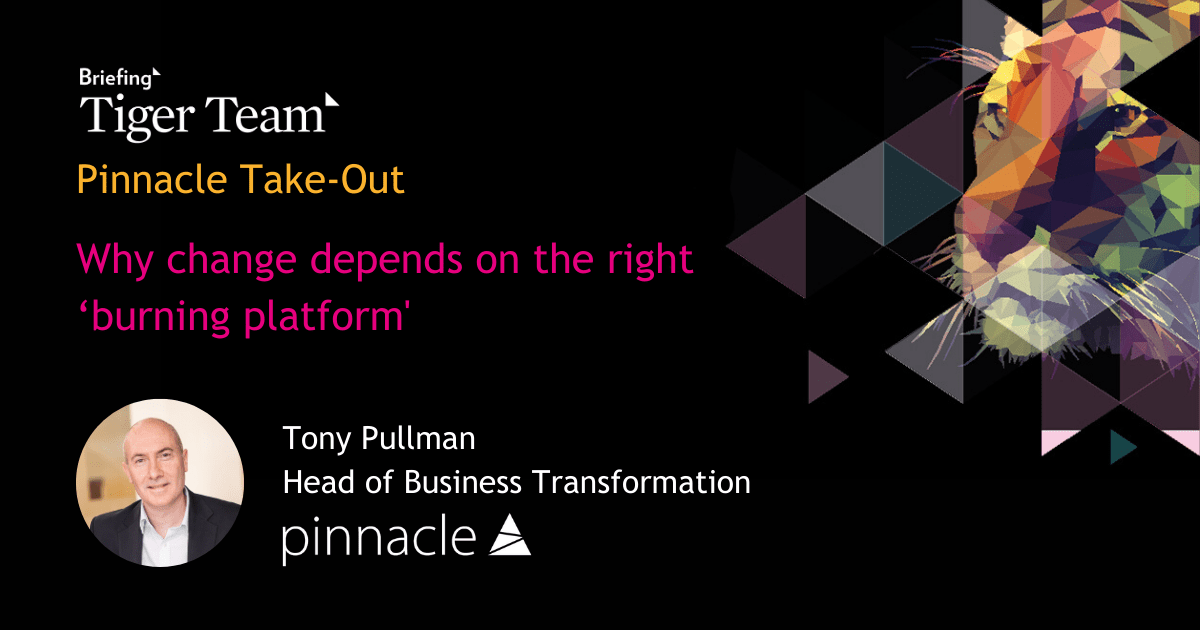Pinnacle: Why change depends on the right ‘burning platform’
As change professionals, we talk about the need to have a ‘burning platform’ as the basis for any change initiative. This is because a burning platform will create the urgency you need to bring people along as you move things from the status quo to a new way as quickly as possible.
The Covid-19 pandemic created such a need as teams have been forced to work from home, change their ways of working and adapt to new IT. Although it’s a situation that nobody would have wanted or envisaged, it has removed any resistance by the very fact that people:
- had no choice but to act; and
- felt an element of fear that stopped them from saying ‘no’ and meant they had to embrace change in order to continue to work.
So, we’ve discovered we can push change through quickly when we have a burning platform that people get behind. Now, how do we use this learning when we want change to happen as quickly and free of resistance as we have seen in recent months, but recognise that we won’t necessarily have that same urgent platform to work with?
What we can learn from Covid-19
Covid-19 has shown us that we have to work hard at the start of initiatives to build a new platform, or build on an existing one quickly to retain momentum. This platform could come from a financial imperative for success (be that for the firm as a whole or at individual level). Or it could come from client demand that people see as being real to their deliverables. Because we’ve seen that unless people have real skin in the game, it remains easy for them to push back and resist.
First, we need a combination of things to make up the burning platform. This type of change must become part of a firm’s culture and the fabric of how things happen – ‘this is the way we work now’. People must know that they have to get onboard to succeed; that they will be measured on this and rewarded for their support.
Second, that same culture must have speed of movement at its heart. This means a move away from large projects that take too long, to smaller, more agile ones. And it means everyone must know that failing quickly is ‘ok’. That it’s almost an expected outcome in order to learn and be safe to try again.
Finally, there should be a platform on top of that culture that has a financial imperative or reward, or one that is intrinsically linked to a client deliverable that requires personal involvement.
This kind of mix can create the right basis for change. Weaving it into a firm’s culture, and being agile and accepting of change, is a must for any firm looking to survive – or more importantly, thrive.
Watch the video snippet on YouTube here (Relevant timing: 2:12-3:18)




